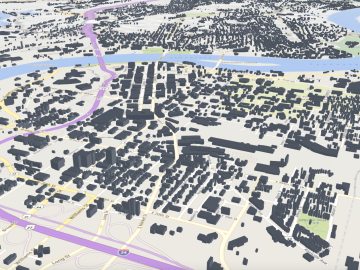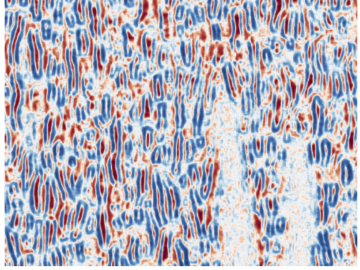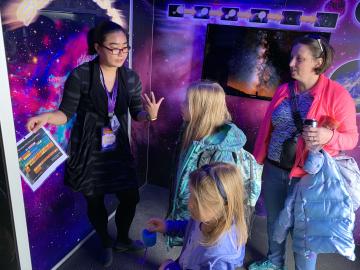
Filter News
Area of Research
- Biological Systems (1)
- Biology and Environment (33)
- Biology and Soft Matter (1)
- Clean Energy (38)
- Climate and Environmental Systems (1)
- Computer Science (1)
- Fusion and Fission (6)
- Materials (20)
- Materials for Computing (2)
- National Security (18)
- Neutron Science (9)
- Nuclear Science and Technology (2)
- Supercomputing (32)
News Type
News Topics
- 3-D Printing/Advanced Manufacturing (7)
- Advanced Reactors (1)
- Artificial Intelligence (8)
- Big Data (6)
- Bioenergy (17)
- Biology (16)
- Biomedical (5)
- Biotechnology (3)
- Buildings (4)
- Chemical Sciences (4)
- Clean Water (4)
- Climate Change (21)
- Composites (1)
- Computer Science (20)
- Coronavirus (3)
- Cybersecurity (3)
- Decarbonization (14)
- Energy Storage (5)
- Environment (33)
- Exascale Computing (4)
- Frontier (4)
- Fusion (4)
- Grid (3)
- High-Performance Computing (7)
- Hydropower (3)
- Isotopes (1)
- ITER (1)
- Machine Learning (5)
- Materials (8)
- Materials Science (5)
- Mercury (2)
- Microscopy (7)
- Nanotechnology (4)
- National Security (7)
- Net Zero (2)
- Neutron Science (7)
- Nuclear Energy (8)
- Partnerships (1)
- Physics (3)
- Polymers (1)
- Quantum Computing (5)
- Quantum Science (5)
- Security (2)
- Simulation (3)
- Space Exploration (1)
- Summit (8)
- Sustainable Energy (14)
- Transportation (6)
Media Contacts

Buildings use 40 percent of America’s primary energy and 75 percent of its electricity, which can jump to 80 percent when a majority of the population is at home using heating or cooling systems and the seasons reach their extremes.

Beyond solids, liquids, gases, plasma, and other examples only accessible under extreme conditions, scientists are constantly searching for other states of matter.

Scientists at the U.S. Department of Energy’s Brookhaven National Laboratory have new experimental evidence and a predictive theory that solves a long-standing materials science mystery: why certain crystalline materials shrink when heated.

Elizabeth Herndon believes in going the distance whether she is preparing to compete in the 2020 Olympic marathon trials or examining how metals move through the environment as a geochemist at the Department of Energy’s Oak Ridge National Laboratory.

In the vast frozen whiteness of the central Arctic, the Polarstern, a German research vessel, has settled into the ice for a yearlong float.

Scouts from around East Tennessee learned about supercomputing, electricity, isotopes, physics, and much more at Oak Ridge National Laboratory’s final Traveling Science Fair event of 2019

Two of the researchers who share the Nobel Prize in Chemistry announced Wednesday—John B. Goodenough of the University of Texas at Austin and M. Stanley Whittingham of Binghamton University in New York—have research ties to ORNL.

The type of vehicle that will carry people to the Red Planet is shaping up to be “like a two-story house you’re trying to land on another planet.

Scientists at the US Department of Energy’s Oak Ridge National Laboratory have demonstrated a method to insert genes into a variety of microorganisms that previously would not accept foreign DNA, with the goal of creating custom microbes to break down plants for bioenergy.

A modern, healthy transportation system is vital to the nation’s economic security and the American standard of living. The U.S. Department of Energy’s Oak Ridge National Laboratory (ORNL) is engaged in a broad portfolio of scientific research for improved mobility


